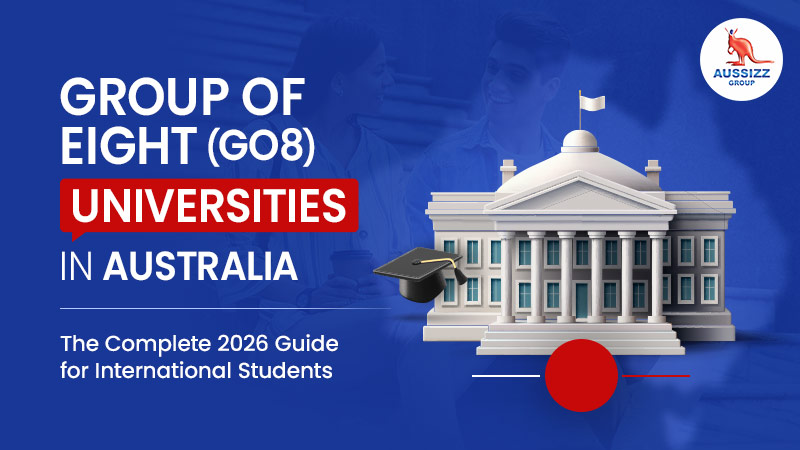Taking Advantage of Australia’s Skilled Migration: A New Era for Global Talent
What if the pathway to becoming a permanent resident in Australia just became more accessible? How are skilled professionals around the world affected when a nation like Australia, known for its robust immigration Australia policies, revises its skilled migration programs? These pivotal questions mark a significant shift in Australia’s approach to skilled migration, highlighting the evolving nature of Australian skilled migration.
In a rapidly evolving global landscape, Australia’s General Skilled Migration (GSM) program is undergoing transformative changes. With the world becoming more interconnected, the movement of skilled labour across borders is more crucial than ever. Australia, known for its robust economy and high quality of life, has long been an attractive destination for skilled professionals. But what happens when the rules of the game change?
Recent reforms, particularly impacting regional areas like South Australia, have stirred discussions and concerns among businesses and potential migrants alike. This blog dives into these changes, unravelling their implications for both Australian businesses facing regional labour shortages in Australia and international job seekers. But why are these changes happening, and what do they signify for the future of skilled migration in Australia?
As we get into the current landscape of the GSM program, let’s explore the emerging challenges and opportunities these changes present. What do these reforms mean for local businesses struggling with labour shortages? How can international talents leverage these new opportunities? Let’s uncover the answers.
The Current Landscape of GSM in Australia
What exactly shapes the current state of the General Skilled Migration (GSM) program in Australia? How is it evolving to address regional labour shortages and align with global workforce demands?
- Overview of the GSM Program
Australia’s General Skilled Migration (GSM) program is a cornerstone of the country’s immigration strategy, designed to attract skilled workers from around the world. This program consists of several visa categories, including the Skilled-Independent Visa (subclass 189), Skilled-Nominated Visa (subclass 190), and Skilled Work Regional (Provisional) Visa (subclass 491).
Tejas Patel, a prominent migration consultant at Aussizz Group, emphasises the program’s significance, stating, “The GSM program is an essential component of Australia’s immigration strategy, aligning with the nation’s evolving economic and workforce needs.” These visas cater to skilled workers in high demand, offering pathways to permanent residency in Australia, including for those interested in professional year programs or looking to study in Australia. The Skilled-Nominated Visa supports skilled applicants emigrating to Australia with sponsorship from an Australian State or Territory.
The Skilled Work Regional (Provisional) Visa is a temporary visa enabling skilled workers to reside and work in Australian regional areas for up to 5 years, addressing specific regional needs.
ALSO READ: Migrate to Regional Australia: Top 10 reasons to follow
Applicants for a skilled migrant visa must meet criteria including age, points assessment, nomination by an Australian territory or state government, English language proficiency, and health requirements.
Discover more about the General Skilled Migration Program on the official Australian Government website.
- Challenges Faced by Regional Businesses
Despite the GSM program’s success in attracting global talent, recent developments have raised concerns, particularly among regional businesses in Australia. A notable example is a restaurant owner in South Australia’s southeast, who has struggled with severe staff shortages—a scenario familiar to many migration agents in Adelaide. This reflects a broader challenge faced by businesses in regional areas, emphasising the need for skilled migration Australia reforms.
The recent changes to the GSM program have inadvertently made it tougher for these businesses to find the skilled workers they need, highlighting the critical role of immigration consultants in navigating these new landscapes. There’s a growing sentiment that the changes have reduced the incentives for skilled migrants, including those seeking spouse visa Australia or family visa Australia, to move to regional areas, exacerbating existing labour shortages.
- The Need for Urgent Reforms
The call for reform in the GSM program stems from the critical need to address labour shortages in regional areas. The current situation underscores the importance of aligning immigration policies with the actual needs of businesses across different regions of Australia. Migration consultants, especially those in cities like Melbourne and Perth, are key players in this scenario, advocating for changes that respond more effectively to the varying demands of the Australian labour market.
- Local Voices and Their Impact
The concerns voiced by local business owners, like the one in South Australia, highlight the ground-level impact of immigration policies. These local experiences are crucial in shaping a more responsive and adaptive GSM program and are often the focus of discussions among migration agent Melbourne and migration agent Perth professionals. Their insights provide valuable input into how policy changes affect the availability of skilled labour and the overall health of regional economies.
ALSO READ: Importance Of Skillselect In Australian Skilled Migration Visa
Overview of the 2023-24 Changes in the GSM Program
Two unanswered questions haunt the businesses that are awaiting for a change i.e. What recent changes have been made to Australia’s skilled migration program? AND… How might these impact both current and aspiring skilled migrants in Australia, especially those considering spouse visas Australia or the prospective marriage visa?
Let’s debunk them one-by-one.
Key Changes in the GSM Program
The Australian government, recognizing the need to adapt its skilled migration strategy to the evolving global and local economic landscape, implemented several changes to the General Skilled Migration program starting 1 July 2023. These changes are significant in shaping the future of skilled migration to Australia.
- Increase in the Temporary Skilled Migration Income Threshold (TSMIT): One of the most notable changes is the increase in TSMIT from $53,900 to $70,000. This change mandates that employers looking to sponsor overseas workers must now offer a higher minimum salary. While this move aims to attract more skilled talent by ensuring competitive compensation, it also poses new challenges, particularly for small and regional businesses, which may struggle to meet these increased wage requirements. This especially applies to migration consultants Melbourne and migration consultants Perth.
- Introduction of New Visa Pathways: The reforms include the introduction of new visa pathways and adjustments to existing ones. These changes are designed to streamline the migration process, making it more efficient and responsive to the current needs of the Australian economy and labour market. This is where a registered migration agent really shines, especially in fields like hospitality where there are serious labour shortages.
- Emphasis on Skilled Migration and Improved Skills Recognition: The 2023-24 changes place a strong emphasis on skilled migration, with improved mechanisms for skills recognition. This shift is indicative of Australia’s strategy to attract high-quality talent and ensure that the skills of incoming migrants align closely with the country’s labour market demands.
Impact on Regional Businesses and Labor Markets
The changes, particularly the increase in TSMIT, have a pronounced impact on regional businesses. For instance, in South Australia, businesses have expressed concerns about the heightened challenges in attracting skilled migrants due to these new salary thresholds. This is especially pertinent in sectors like hospitality, where regional businesses already face acute labour shortages.
The removal of certain incentives for skilled migrants to work in regional areas further compounds this challenge, potentially leading to a worsening of the labour shortage situation in these regions.
Broader Economic Implications
While these changes present challenges for regional businesses, they also reflect a strategic shift in Australia’s skilled migration policy. By increasing the TSMIT and introducing new visa pathways, the government aims to attract a higher calibre of skilled migrants, thereby contributing to overall economic growth and productivity. These reforms are part of a larger effort to ensure that the Australian migration system remains competitive and adaptive to global trends.
A Balancing Act
The 2023-24 changes to the GSM program represent a balancing act by the Australian government – striving to meet the dual goals of attracting high-skilled talent globally while also addressing the specific labour market needs within the country, including those of regional areas. This delicate balance is key to ensuring that the GSM program remains effective and beneficial for both the Australian economy and the international skilled workforce.
Enhanced Opportunities for Skilled Migrants and Solutions for Regional Labor Shortages
That brings us to our next question: With the recent reforms in Australia’s skilled migration, what new doors have opened for skilled migrants, including those exploring options like the 485 visa Australia, and how could they help resolve regional labour shortages in Australia?
- A Gateway for International Talent
The recent reforms in Australia’s General Skilled Migration program open up opportunities for skilled workers globally. The increase in the Temporary Skilled Migration Income Threshold (TSMIT) and new visa pathways are significant steps towards attracting highly skilled professionals. This ensures competitive compensation and positions Australia as an attractive destination for career growth.
- Pathways to Permanent Residency
One of the most appealing aspects of the recent changes is the clearer pathways they create towards permanent residency in Australia. This is particularly enticing for skilled migrants looking not just for temporary work opportunities but for the chance to settle and build a life in Australia. The reforms make living and working in Australia more attractive and accessible, helping address labour shortages in various sectors.
- Addressing Regional Labour Shortages
The challenges faced by regional businesses in Australia, such as those in South Australia, are acknowledged in the recent visa reforms. The increase in TSMIT, despite posing initial hurdles, shifts towards attracting a diverse and highly skilled workforce, potentially alleviating labor shortages. Skilled migrants can bring skills and expertise to local industries, contributing to regional economies.
It’s clear that these changes are good for two reasons: they give skilled foreign workers exciting job chances in Australia and help solve serious labour shortages, especially in rural areas. The future of Australia’s economy and workforce will depend on how well foreign talent and local needs work together.
- Looking Towards the Future
As Australia continues to refine its skilled migration policies, the focus is on creating a win-win situation – where international talent finds rewarding opportunities, and Australian businesses, especially in regional areas, benefit from the influx of skills and expertise. This dynamic interaction between global talent and local needs is poised to shape the future of the Australian workforce and economy.
But with these complexities and opportunities, where does one start? How can potential migrants effectively and efficiently navigate these waters?
Expert Guidance in Navigating Skilled Migration: A Subtle Necessity
- The Complexity of Skilled Migration
Many people who want to move can find it hard to figure out how to use the General Skilled Migration program. Because the program is so complicated and there have been recent changes, you need to know a lot about Australian immigration rules and procedures. In this situation, getting advice from an expert, especially an experienced immigration counsellor, is very important.
- Role of Immigration Consultants
Immigration consultants and agents, like those at Aussizz Group, are very important for making the process of skilled migration easier to understand. They provide clarity and direction, ensuring potential migrants are well-informed. Their expertise is crucial for those exploring options like the partner visa Australia or the skilled visa Australia, guiding applicants through each step of the visa application process.
- Adopting Different Strategies for Migration
Each individual’s migration journey is unique, influenced by their professional background and aspirations. Expert consultants offer personalised migration strategies, vital for those considering migration agent services in cities like Sydney or Brisbane. They help in identifying the most suitable visa options, such as the 485 visa Australia or the prospective marriage visa, and navigating the application process.
- Improving the Visa Process
Many steps must be taken in order to get an Australian visa. All of these steps are necessary for people who want permanent residency in Australia. The process is sped up by immigration experts, which makes it easier for applicants, whether they are seeking family visa Australia, temporary graduate visa, or 489 visa Australia.
In skilled migration, the importance of expert assistance, such as that provided by a registered migration agent or MARA agent, cannot be overstated. Their expertise is invaluable, especially for those navigating the complexities of immigration Australia or seeking pathways to Australian permanent residency.
In conclusion, Australia’s skilled migration landscape needs to change.
As we wrap up our look at how Australia’s skilled migration scene is changing, what are the most important things that people who want to start this journey should remember?
The General Skilled Migration (GSM) programme in Australia is going through big changes. These reforms, presenting challenges for regional businesses in areas like South Australia, also open up opportunities for skilled international job seekers, including those seeking a partner visa in Australia or exploring skilled migration Australia pathways.
A Responsive and Dynamic Migration System
The increase in the Temporary Skilled Migration Income Threshold (TSMIT) and the introduction of new visa pathways reflect Australia’s commitment to attracting high-calibre talent. By raising the bar for skilled migration, the country is not only ensuring competitive compensation for migrants but also addressing the needs of its evolving economy. These changes signify a strategic shift, positioning Australia as a top destination for skilled professionals worldwide.
Regional Revival Through Skilled Migration
Despite initial challenges, the long-term benefits of these reforms for regional areas like South Australia are significant. Attracting skilled migrants to these regions, through pathways like the 485 visa Australia or the temporary graduate visa, can help reduce labour shortages, contributing to local economic growth. Focusing on skilled migration does two things: it improves the national population and helps regional growth.
The Role of Expert Guidance
In navigating these changes, the role of expert immigration guidance, offered by entities like Aussizz Group, becomes increasingly vital. Their deep understanding of the Australian immigration system is crucial for prospective migrants, from personalizing migration strategies to streamlining the visa application process, especially for those seeking a skilled visa in Australia or pathways to permanent residency.
Looking Forward
Australia is always improving and changing its policies on skilled migration, which means that job chances for skilled foreign workers are better than ever. Now is a great time for people who are thinking about moving under the GSM programme to start a trip full of opportunities and growth.
Finally, the most recent changes to Australia’s GSM programme are a big step forward in the way the country handles skilled migrants. Skilled immigrants have a unique chance to add to and benefit from Australia’s lively and diverse society if they get the right help and learn about the new environment.

 AUS
Australia
AUS
Australia
 IND
India
IND
India
 UAE
UAE
UAE
UAE
 CA
Canada
CA
Canada
 SL
Srilanka
SL
Srilanka











